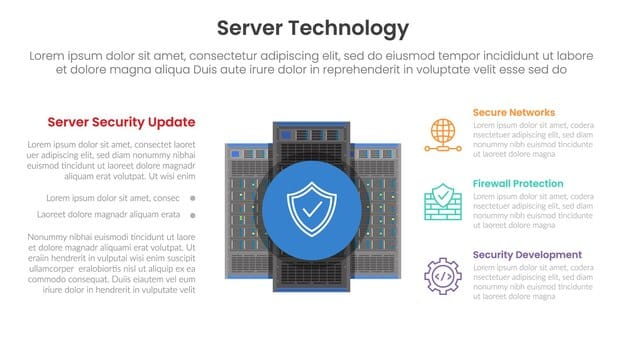Cybersecurity Alert: Critical Vulnerabilities Found in US Government Software Platforms

Cybersecurity Alert: This week, three critical vulnerabilities were discovered in US government software platforms, posing significant risks to data security and operational integrity, necessitating immediate patching and enhanced security measures.
A cybersecurity alert has been issued following the discovery of three critical vulnerabilities in software platforms used by the US government this week. These flaws represent a significant risk and demand immediate attention.
Understanding the Cybersecurity Threat Landscape
The ever-evolving nature of cybersecurity threats necessitates constant vigilance. Recently, several vulnerabilities have been identified within the US government’s software infrastructure, highlighting the persistent challenges in maintaining robust digital defenses. Let’s delve deeper into these vulnerabilities and understand the potential impact.
The Growing Sophistication of Cyber Attacks
Cyber attacks are becoming increasingly sophisticated, with threat actors employing advanced techniques to exploit weaknesses in software systems. This necessitates proactive measures, including regular security audits and prompt patching of known vulnerabilities. The importance of staying ahead of these threats cannot be overstated.
Impact on Government Infrastructure
Compromised government software platforms can lead to severe consequences, including data breaches, disruption of essential services, and potential compromise of national security. Therefore, any identified vulnerability must be addressed swiftly and effectively to minimize the risk of exploitation.
- Regularly updating software systems.
- Implementing strong access controls.
- Conducting routine security assessments.
- Training employees on cybersecurity best practices.
In conclusion, the evolving threat landscape demands a proactive and comprehensive approach to cybersecurity, especially within government infrastructure. Addressing vulnerabilities promptly and adopting robust security practices are crucial steps in safeguarding sensitive data and ensuring operational continuity.

Details of the Three Critical Vulnerabilities
This week’s cybersecurity alert focuses on three specific vulnerabilities discovered in US government software platforms. Understanding the nature of these flaws is crucial for devising effective mitigation strategies. Here’s a breakdown of each vulnerability:
Vulnerability in Data Encryption Software
One of the critical vulnerabilities lies within data encryption software used by several government agencies. This flaw could allow unauthorized individuals to decrypt sensitive information, potentially compromising classified data and personal information. Addressing this vulnerability is paramount to maintain data confidentiality.
Weakness in Network Authentication Protocols
Another significant vulnerability is present in network authentication protocols. This weakness could enable attackers to bypass security measures and gain unauthorized access to internal networks. Implementing stronger authentication mechanisms is crucial to prevent such breaches and protect network integrity.
Flaw in Web Application Security
The third vulnerability identified pertains to web application security. This flaw could allow attackers to inject malicious code into government websites, potentially compromising user data and leading to phishing attacks. Securing web applications and implementing robust input validation are essential to mitigate this risk.
- Assessing the impact of each vulnerability on affected systems.
- Prioritizing patching efforts based on the severity of the vulnerability.
- Implementing temporary workarounds to mitigate risk while patches are being deployed.
- Verifying the effectiveness of patches and workarounds through thorough testing.
In summary, these three critical vulnerabilities highlight the diverse range of threats facing government software platforms. Prompt and effective remediation efforts are crucial to minimize the potential for exploitation and safeguard sensitive data.
Immediate Actions Taken by Government Agencies
In response to the cybersecurity alert, US government agencies have taken immediate actions to address the identified vulnerabilities. These actions are aimed at mitigating the risk of exploitation and ensuring the continued security of government systems. Let’s examine the steps taken so far:
Emergency Patching and Updates
One of the first actions taken was to release emergency patches and updates for the affected software platforms. These patches are designed to fix the vulnerabilities and prevent attackers from exploiting them. Government agencies are working diligently to deploy these patches across all affected systems.
Enhanced Monitoring and Detection
To detect any potential exploitation attempts, government agencies have enhanced their monitoring and detection capabilities. This includes deploying advanced intrusion detection systems and security information and event management (SIEM) tools. These measures help identify and respond to suspicious activity in real-time.

Collaboration with Cybersecurity Experts
Government agencies are collaborating with cybersecurity experts from both the public and private sectors to assess and address the vulnerabilities. This collaboration allows agencies to leverage the expertise and resources of external partners to enhance their security posture.
- Conducting thorough risk assessments to identify potential attack vectors.
- Implementing multi-factor authentication for critical systems.
- Segmenting networks to limit the impact of a potential breach.
- Regularly backing up data to ensure business continuity.
In conclusion, the immediate actions taken by government agencies demonstrate a commitment to addressing the identified vulnerabilities and safeguarding government systems. Continued vigilance and proactive security measures are essential to maintain a strong cybersecurity posture.
Long-Term Strategies for Enhanced Security
While immediate actions are crucial in addressing current vulnerabilities, long-term strategies are essential to ensure sustained cybersecurity. The US government is focusing on several key areas to strengthen its defenses and mitigate future risks. Here are some of the long-term strategies being implemented:
Investing in Cybersecurity Training and Education
A well-trained workforce is the first line of defense against cyber threats. The government is investing in cybersecurity training and education programs to equip employees with the knowledge and skills needed to identify and respond to potential attacks. This includes training on phishing awareness, secure coding practices, and incident response procedures.
Implementing Zero Trust Architecture
The Zero Trust security model is gaining traction within the government. This approach assumes that no user or device is inherently trustworthy, regardless of whether they are inside or outside the network perimeter. Implementing Zero Trust requires strict identity verification, least privilege access, and continuous monitoring.
Promoting Secure Software Development Practices
To prevent vulnerabilities from being introduced in the first place, the government is promoting secure software development practices. This includes incorporating security considerations throughout the software development lifecycle (SDLC), conducting regular code reviews, and performing penetration testing.
- Establishing a vulnerability disclosure program to encourage responsible reporting of security flaws.
- Developing incident response plans to ensure a coordinated and effective response to cyber incidents.
- Sharing threat intelligence with other government agencies and private sector partners.
- Regularly updating security policies and procedures to reflect the evolving threat landscape.
In summary, long-term strategies for enhanced security are critical to building a resilient and robust cybersecurity posture within the US government. By investing in training, implementing Zero Trust architecture, and promoting secure software development, the government can better protect its systems and data from future threats.
The Role of Public-Private Partnerships in Cybersecurity
Cybersecurity is a shared responsibility, and public-private partnerships play a crucial role in enhancing the nation’s overall security posture. Collaboration between government agencies and private sector organizations can lead to more effective threat detection, prevention, and response. Let’s explore the benefits of these partnerships:
Sharing Threat Intelligence
One of the key benefits of public-private partnerships is the sharing of threat intelligence. Private sector organizations often have access to valuable information about emerging threats and attack trends. Sharing this intelligence with government agencies can help them better understand the threat landscape and develop more effective defenses.
Joint Research and Development
Public-private partnerships can also foster joint research and development efforts. By combining the expertise and resources of both sectors, it is possible to develop innovative cybersecurity solutions that address pressing challenges. This collaboration can lead to breakthroughs in areas such as artificial intelligence, machine learning, and cryptography.
Incident Response and Coordination
When a cyber incident occurs, effective coordination between government agencies and private sector organizations is essential. Public-private partnerships can facilitate this coordination by establishing clear communication channels and protocols. This ensures that incident response efforts are coordinated and efficient, minimizing the impact of the attack.
- Developing and sharing best practices for cybersecurity.
- Conducting joint training exercises and simulations to test incident response capabilities.
- Establishing a framework for secure data sharing and collaboration.
- Promoting the adoption of cybersecurity standards and certifications.
In summary, public-private partnerships are essential for enhancing cybersecurity. By sharing threat intelligence, fostering joint research and development, and coordinating incident response efforts, these partnerships can help protect the nation’s critical infrastructure and data.
Future Challenges and Emerging Threats
The field of cybersecurity is constantly evolving, and new challenges and threats are emerging all the time. Staying ahead of these challenges requires continuous innovation and adaptation. Let’s examine some of the future challenges and emerging threats facing the US government:
Artificial Intelligence (AI) and Machine Learning (ML)
While AI and ML can be used to enhance cybersecurity, they can also be exploited by attackers. AI-powered attacks can be more sophisticated and difficult to detect. Defending against these attacks will require developing new AI-based defenses and strategies.
Internet of Things (IoT) Security
The proliferation of IoT devices presents a new set of security challenges. Many IoT devices have weak security controls and can be easily compromised. Securing these devices will require developing new standards and protocols, as well as educating consumers about the risks.
Quantum Computing
Quantum computing has the potential to break many of the encryption algorithms used today. This poses a significant threat to data security and privacy. Preparing for the advent of quantum computing will require developing new quantum-resistant encryption algorithms.
- Addressing the skills gap in cybersecurity.
- Promoting cybersecurity awareness among the general public.
- Encouraging international cooperation on cybersecurity issues.
- Developing a legal and regulatory framework for cybersecurity.
In conclusion, the future of cybersecurity will be shaped by emerging technologies and evolving threats. By addressing these challenges proactively and investing in research and development, the US government can maintain a strong cybersecurity posture and protect its systems and data from future attacks.
| Key Point | Brief Description |
|---|---|
| 🚨 Critical Vulnerabilities | Three critical vulnerabilities found in US government software this week. |
| 🛡️ Immediate Actions | Government agencies released emergency patches and enhanced monitoring systems. |
| 🤝 Public-Private Partnerships | Collaboration is crucial for threat intelligence and incident response. |
| 🤖 Future Threats | Emerging threats include AI-powered attacks and IoT vulnerabilities. |
Frequently Asked Questions (FAQ)
Three critical vulnerabilities include flaws in data encryption software, network authentication protocols, and web application security, potentially leading to data breaches and unauthorized access.
Government agencies released emergency patches and updates, enhanced monitoring and detection capabilities, and collaborated with cybersecurity experts to address the vulnerabilities.
Public-private partnerships facilitate the sharing of threat intelligence, joint research and development, and coordinated incident response, enhancing overall cybersecurity posture.
Long-term strategies include investing in cybersecurity training, implementing Zero Trust architecture, and promoting secure software development practices to prevent future vulnerabilities.
Future challenges involve addressing AI-powered attacks, securing IoT devices, and preparing for quantum computing, requiring continuous innovation and adaptation in cybersecurity defenses.
Conclusion
In conclusion, the recent cybersecurity alert regarding critical vulnerabilities in US government software platforms underscores the importance of proactive security measures and continuous vigilance. Addressing these vulnerabilities promptly, implementing long-term strategies, and fostering public-private partnerships are essential steps in safeguarding sensitive data and ensuring the integrity of government systems.





